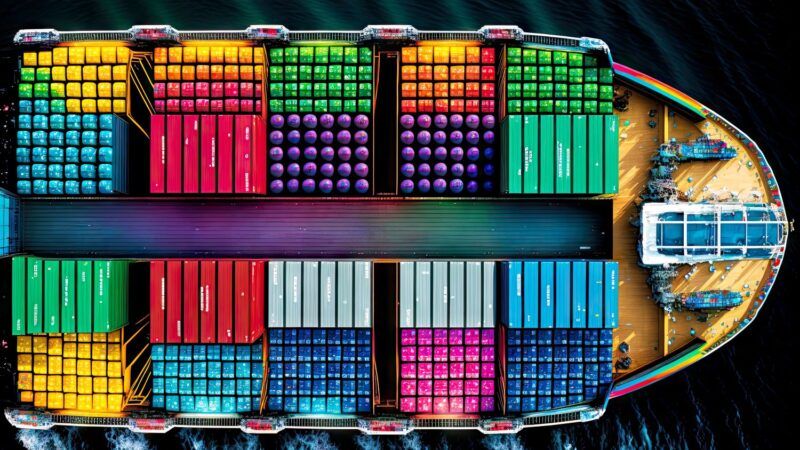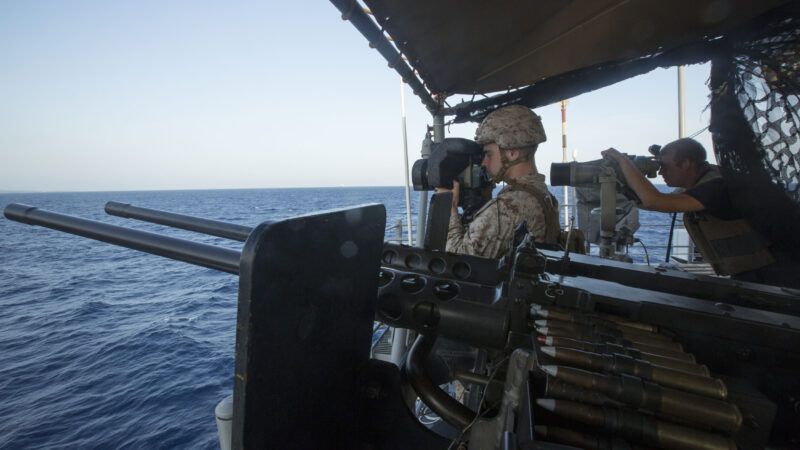 Green maritime corridors are still a developing tool. However, best practices have already been identified and methodologies and guidelines are becoming more defined. (Getty Images)
Green maritime corridors are still a developing tool. However, best practices have already been identified and methodologies and guidelines are becoming more defined. (Getty Images)
Green shipping corridors: all hands on deck for maritime sustainability
The concept of green shipping corridors (GSC) are a set of tools to facilitate cross-value collaboration. There are not a target on themselves but a clutch to start walking the unforgiving waters of a new economy based on renewable energy. However, the transition is not exempt from challenges, which are described in this article.

Maurici Hervas is a researcher at CENIT and PhD student in energy transition at the Port of Barcelona.
 Green maritime corridors are still a developing tool. However, best practices have already been identified and methodologies and guidelines are becoming more defined. (Getty Images)
Green maritime corridors are still a developing tool. However, best practices have already been identified and methodologies and guidelines are becoming more defined. (Getty Images)
The international community mainly agrees on the need to stop climate change by sapping its main root, fossil emissions of GHG. There is no consensus on the path to the reduction of the emissions of these gases and the pace of measures taken differs widely from region to region.
Europe, Canada, Japan, Mexico, Chile, China or the US West coast are some of the countries and regions pushing for the decarbonization of the economy. The main measures are public investments, cap and trade schemes and carbon taxes, some focusing on specific sectors.
Maritime shipping accounts for 3% of the global GHG emissions while providing 90% of the global trade. Nonetheless it is important to start working on its decarbonization as it is unfortunately a hard to abate sector.
Most ships require very high power to operate, and they navigate for long periods of time, hence the energy source must have high density, both gravimetric and volumetric. Current prospects for hydrogen and batteries render these solutions non suitable for the vessel’s needs.
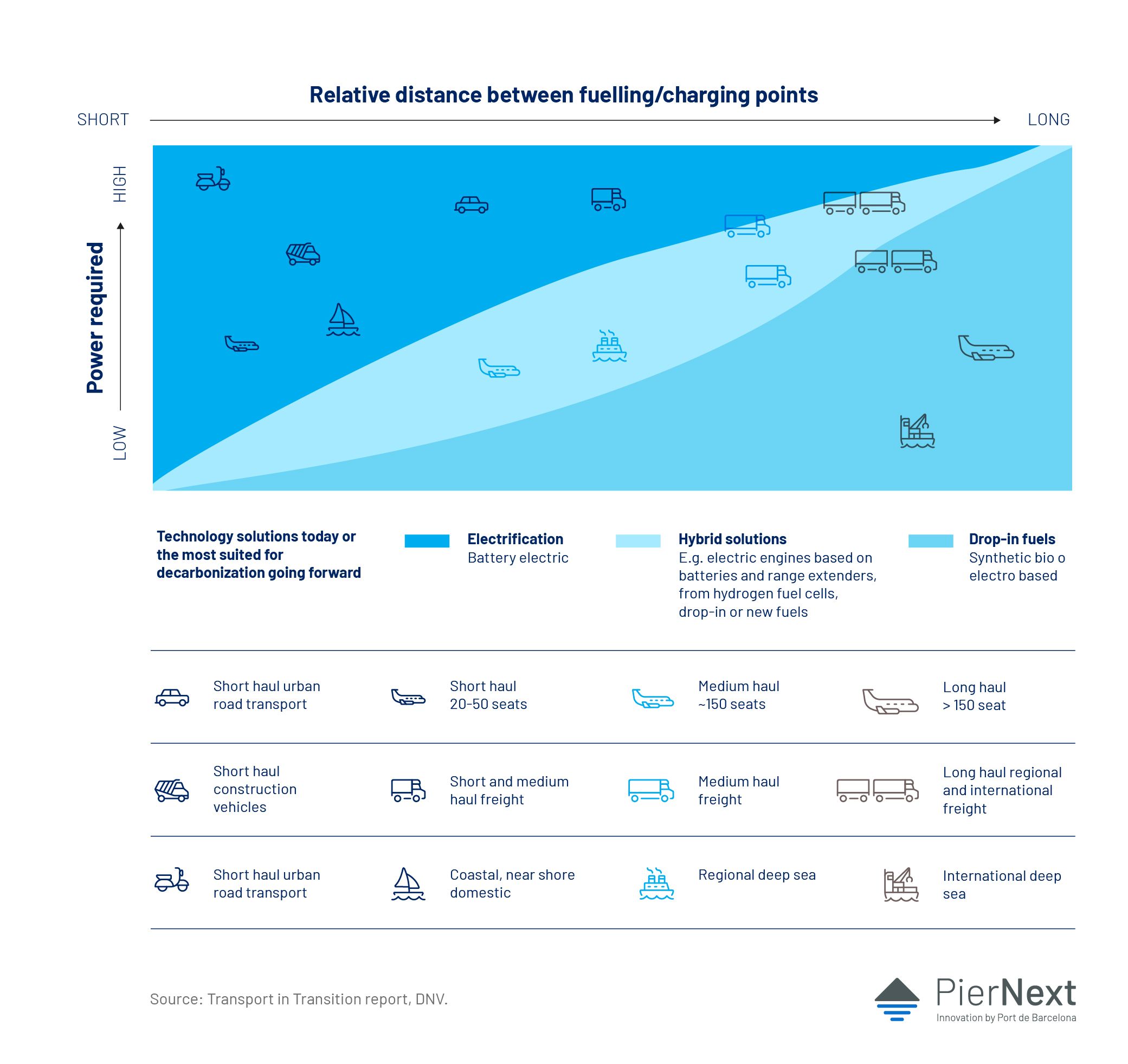
Alternatives fuels and their challenges
Candidates to seize parts of the share of future energy fuels are methanol, ammonia, synthetic fuels and biofuels. These fuels may present some of the following challenges: toxicity, flammability, corrosiveness, scarcity of feedstock, scantness of experience in ports or lack of regulation. However, all of them share the same main drawback, higher price than fossil fuels.
As can be readily derived, the adoption of such fuels demands actions on several areas and from different stakeholders. Thus, the transition from a marine shipping sector based on fossil fuels to a decarbonized transport is complex and will require the collaboration of governments, port authorities, shipping companies and fuel providers, among many others.
For this reason, in order to achieve the decarbonization targets as soon as possible, the concept of green shipping corridors (GSC) was born. They are tools to facilitate cross-value collaboration, solve the chicken and egg problem and capture inertia to increase the share of customers willing to pay a premium for more sustainable products. The GSC are not a target on themselves but a clutch to start walking the unforgiving waters of a new economy based on renewable energy.
Why is the transition difficult?
The first obstacle faced by those that want to start sailing towards zero emission shipping is the selection of fuel pathway. As mentioned before, there are different fuels each with their respective drawbacks.
The investment required to build a new ship is very high, thus the decision to build it ready to operate with some of these fuels is hard to take, even more if the fuel presents risk of availability issues.
Most choose to build dual-fuel ships, able to operate with two fuels, increasing the total investment but reducing its risk. Another option is to perform a retrofit on an existing ship, a costly operation as these ships were not designed to accommodate the required equipment and will have to remain in a shipyard for lengthy periods, constraining the capacity of the fleet.
Fuel producers suffer from the opposite affliction. They have to take the decision on investing in a new facility but do not see a sufficient demand for the fuel to be produced. This dichotomy is known as the chicken & egg problem. Moreover, the production technologies are not fully mature, and costs are being brought down consistently.
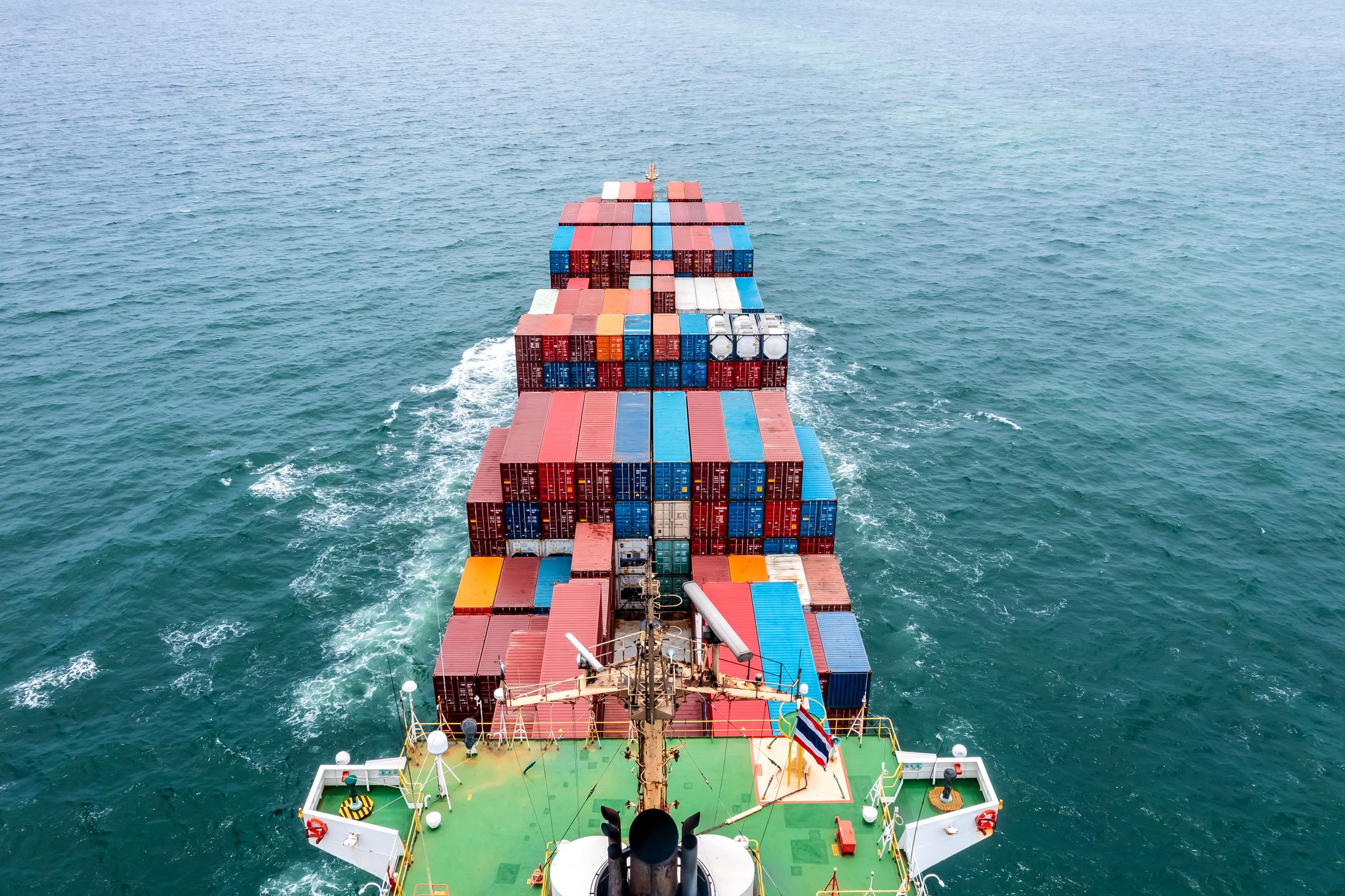
Ports will also face huge investments, both their authorities and the actors that will perform the reception, storage and bunkering of the new fuels. Port authorities will have to adapt their infrastructures to enable the operations with alternative fuels, will have to develop regulations and will need to allocate spaces within their premises for such activities. Energy companies will have to install or retrofit fuel tanks, pipelines and barges, besides the training of their staff to handle these fuels.
Finally, cargo owners will also have to address uncertainty. Consumers are starting to ask for more sustainable products and services, but their willingness to pay a premium for reduced emissions varies depending on the sectors, countries etc...
Besides the important investments bearing high levels of risk, there are other barriers to the deployment of a zero-emission fleet. The majority of the maritime transport is intercontinental where neither train nor road can compete. This implies huge distances to be traveled by large ships, thus needing titanic quantities of fuel. Besides, the international nature of this trade prompts regulatory complexities to be tackled.
How can GSC help?
GSC can take a lot of shapes, but their main benefit remains the same; to create a cooperation framework where the different stakeholders necessary for the implementation of the green corridor can coordinate.
- Coordination enables the constitution of common projects that can de-risk their investments. By aligning different projects, synergies can be reaped to achieve a better outcome.
- Offers a safe space of data sharing to explore options of sustainable demand aggregation, to build a critical mass that makes the business cases for a green ship viable.
- Guarantee enough off-takers for the fuel producers by matching them with shipping companies bypassing the chicken and egg problem.
- Some demonstrations that would be otherwise unachievable can be made possible by defining a common goal across the value chain.
It can also help ports establish themselves as energy hubs, as the implementation of a GSC will require for at least one of the partner ports to accommodate bunkering of the chosen low emission fuel. By doing so, ports can position themselves as energy suppliers of the new renewable shipping economy, strengthening thus their energy offer, which may also be of service to land transport and hinterland economy.
As seen before a major obstacle for the adoption of renewable fuels is the price difference with fossil fuels. GSC can play an important role pushing administrations and governments to further their efforts in reducing this gap by establishing measures such as carbon taxes, contracts for difference, auctions etc.. To lobby from a project encompassing stakeholders across the value chain can bear a stronger impact and facilitate a better tuned measure.
Finally, the establishment of GSC can help raise customers' awareness of the product transport emissions, seeding the urge for clean logistic chains. GSC could enable the establishment of labels of green transport for the products in order to make them more attractive to environmentally sensitized customers. A methodology for the emission reduction calculation can be agreed within the GSC partners facilitating the deployment of such labels.
As the number of customers demanding sustainability from their products increases, GSC will help retailers, cargo owners, ports and shipping companies remain attractive business partners.
2023 has seen a deceleration of announced corridors and a surge of potential corridors under study, showing a certain shift towards new approach on its establishment
Are all the GSC the same?
Green shipping corridors is not a legal figure precisely defined in a law, but an initiative comprised of one or more interested actors. Therefore, no GSC is alike, although there are similarities in different aspects, thus a taxonomy can be derived.
- Focus: it can be focused on reducing a route emission or on advancing a technology maturity.
- Scope: the scope of the GSC can vary greatly, fast-tracking a pilot, linking two ports, decarbonizing a whole route or even developing an entire ecosystem for projects and technologies to be able to develop organically.
- Promoter: The initiative can spur from governments, ports, private companies or it can come from a consortium of previous projects. Depending on the promoter the targets will lean in certain directions, although for GSC to be successful these should always be aligned with the interests of all the necessary stakeholders.
Far from being a hindrance, this lack of strict definition is useful to be able to start exploring potential corridors and shape them as interests, strengths and capabilities are being explored. As has been explained, GSC are a transition tool and each initiative will encounter different obstacles to surmount, requiring a personalized set of instruments.
Another important aspect of GSCs is the way its governance is addressed. This includes the structure, the partners and even its “construction”, as beginnings are often delicate times. Defining first the target of the GSC and clearly identifying the key stakeholders in order to involve them from the start are some of the lessons derived from the first movers.
Then the GSC can be led through programs, agreements or consortiums, to give some examples. Which formula to use should be derived from the defined targets.
What is the current situation of GSC?
Since the Clydebank declaration, new green shipping corridors have been announced continuously. However, 2023 has seen a deceleration of announced corridors and a surge of potential corridors under study showing a certain shift towards new approach on green corridors establishment. It shows the maturity of this concept as more and more methodologies are developed, and preliminary results are published. Some of the corridors under study are The port of Tyne, US-Panama, Dover-Calais, Australia-Singapore among many others, most not publicly discussed.
Global Maritime Forum is very active, carrying out various studies on GSC and has published a progress report reviewing the evolution of GSCs over 2022. It has also performed in close collaboration with the British Embassy in Spain: a study to identify the most promising GSC that Spain could explore the Port of Barcelona’s Cruise routes among them.
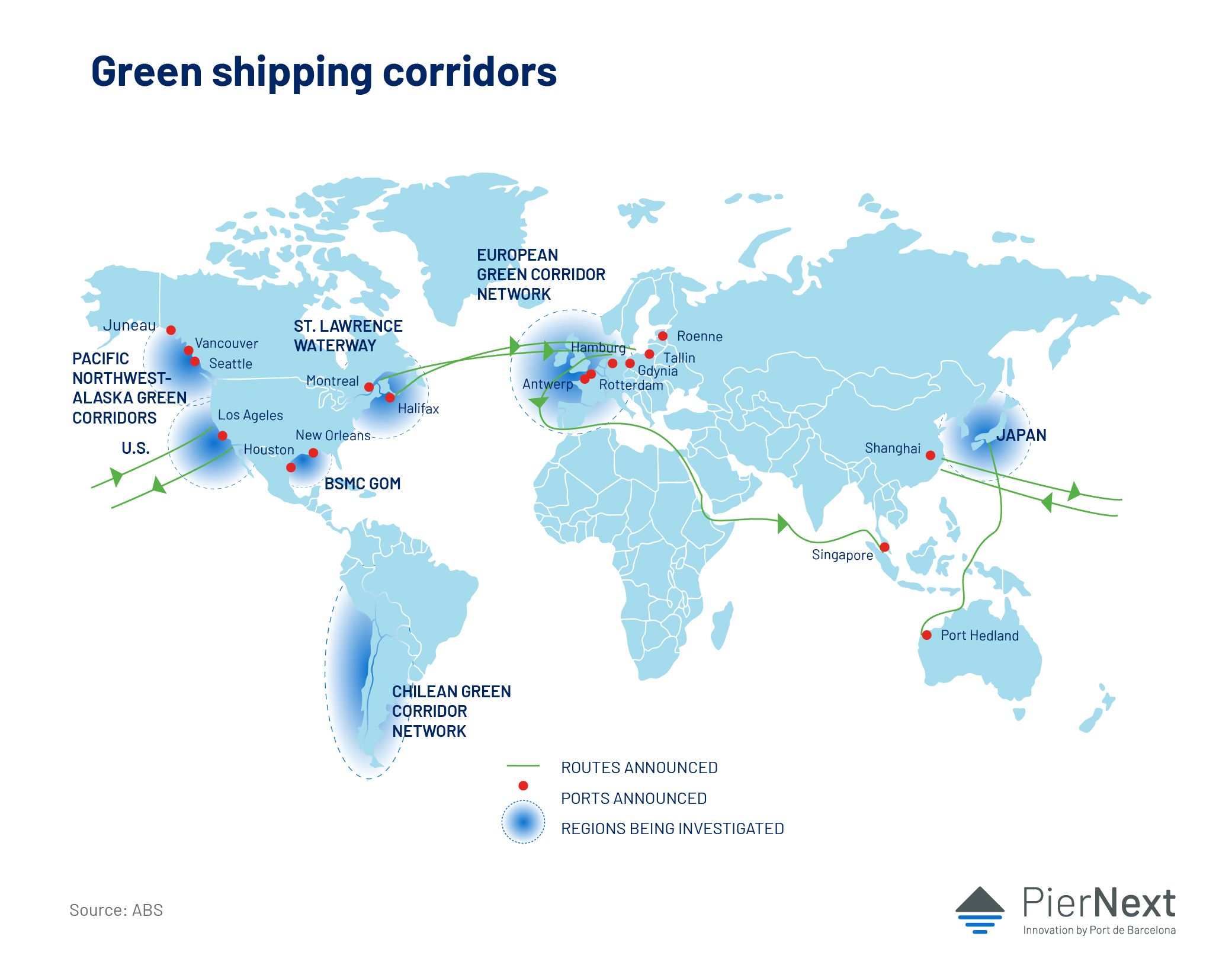
As can be seen in the figure, most GSC announced are located in North America, Europe, and East Asia, coinciding with the regions applying measures to decarbonize their economy. Notable is the case of LA and Singapore, which are evolving from exploring green shipping corridors to start knitting a veritable green network.
GSC announced around the world and its main characteristics
| Members | Date | Link | Corridor | Main partners | Main focus |
| CHILE Network | 2022 Apr | Agreement | Ecosystem | Government & Maersk | Sust. Fuel production |
| Amberes - Montreal | 2021 Nov | Agreement | Programmatic | Port Authorities & Green Fields Biofuels | Liquid bulk |
| Rotterdam - Singapore | 2022 ago | MOU | Technology centric | Port Authorities | Bunkering |
| Los Angeles - Shangai | 2022 Ene. | Partnership | Ports | Port Authorities & Shipping Companies & Cargo Owners | Shipping Emissions |
| Port Hedland - Japan | 2022 Abr. | LOI | Route | Minning and Shipping companies | Iron ore route |
| Nordic Regional | 2022 Mar. | Partnership | Demonstration | Port Authorities & Maersk | Fuel supply chains |
| Halifax - Hamburg | 2022 Sept. | MOU | Pilots | Port Authorities | Bunkering infrastructure |
| Pacific NW - Alaska | 2022 May. | Project Agreement | Programmatic | Port Authorities & Cruise companies | Demonstrations |
| LA – Yokohama - Tokyo | 2023 march | MOU - LOI | Ports - Fuels | Port Authorities & cities | Shipping Emissions |
| LA - Nagoya | 2023 jul | MOU | Ports - Fuels | Port Authorities & cities | Shipping Emissions |
| LA - Nagoya | 2023 julio |
MOU | Puertos - combustibles | Autoridades portuarias & ciudades | Emisiones de los buques |
As GSC will be key to decarbonize the maritime sector, an important ecosystem has developed around the concept; governments, public administrations, organizations, research centers, classification companies and others have been contributing to its progress.
C40 has worked to make connections between cities and ports and is working on the deployment of some corridors. Mærsk Mc-Kinney Møller Center has developed a methodology to kickstart new projects and is actively helping the promotion of novel GSC. WPCAP is also working on fostering the collective knowledge of ports and together with IAPH are developing a tool to evaluate port readiness to accommodate alternative fuels.
Governments have aligned under the Clydebank declaration and are carrying out initiatives to promote GSCs. Classification companies are in a unique position to help those ports that want to explore and deploy GSC as they can bring cross-sectorial information to the partnership.
What will be the next steps for the GSC?
Green shipping corridors are still a tool under development where no project has seen a high degree of maturity. Nonetheless, the first stages of such a project are now well known, best practices have been identified and methodologies and guidelines are more and more defined, facilitating the establishment of new corridors.
Progression of the GSC under development:

Tools are being developed to accelerate the pre-feasibility and feasibility studies, such as ABS model and simulation or Lloyd’s framework to get started working towards a GSC.
In the coming years, alternative fuels ships will start operating and more and more demonstration and pilots will be performed, these will be carried out on the established GSC first, as there will be competition among green ports for these sustainable ships. Ports will probably hasten the development of all the required infrastructure and services for bunkering of alternative fuels.
The IMO GHG strategy (MEPC80) and FuelEU will be enforced from 2025, reinforcing the demand for sustainable fuels which will accelerate the deployment of new production plants. However, these fuels need renewable electricity, which will be in high demand as other sectors will also be forced to decarbonize, a main competitor being land transport. Renewable penetration and grid reinforcement will be key to guarantee availability of alternative fuels for the maritime industry.
Chain of transmission for decarbonisation:
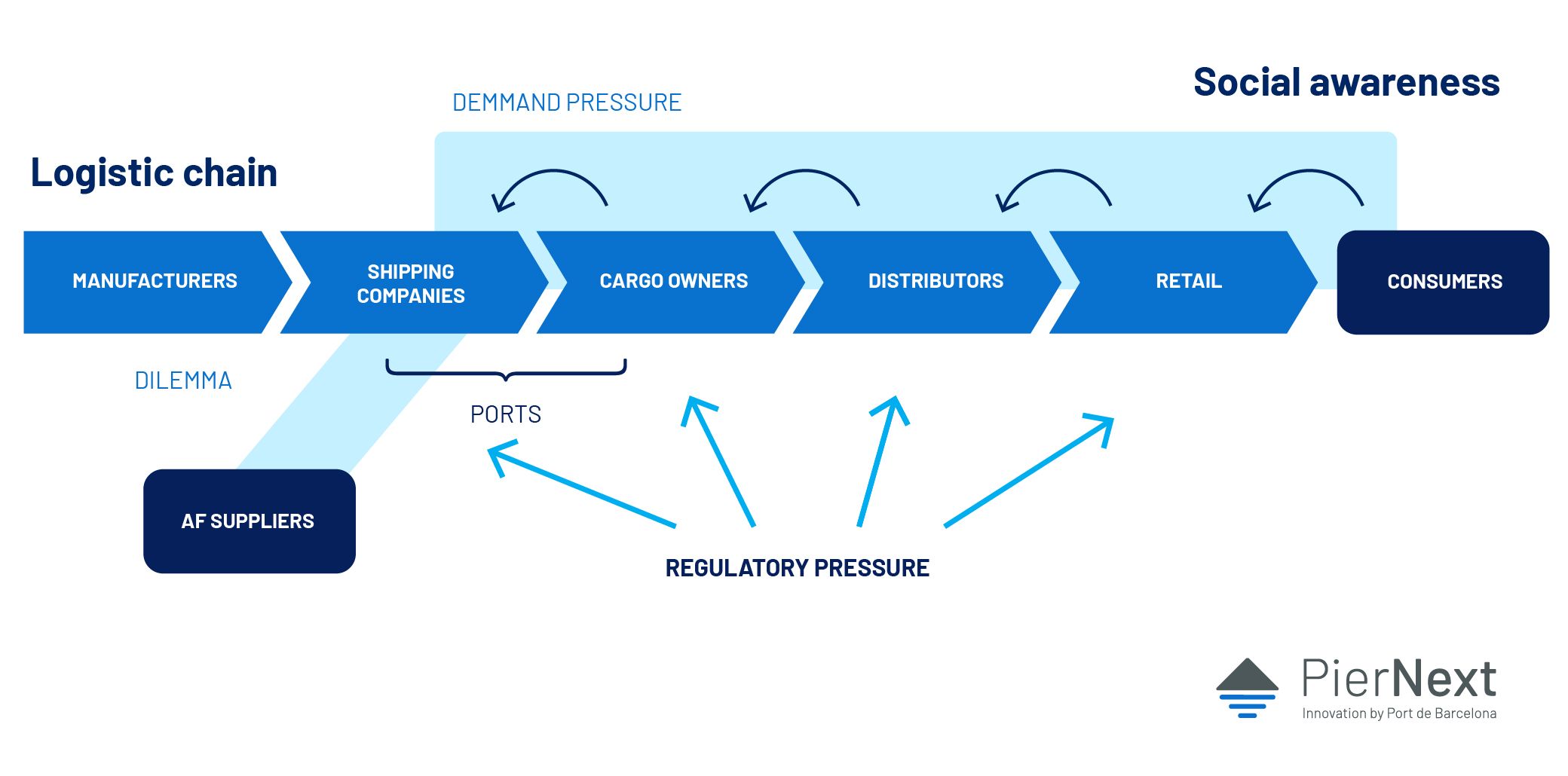
Nonetheless, the main driver for the success of GSC will be the demand for consumer goods with lower carbon footprint. This is why GSC promoters should also provide support in mobilizing the demand for such products.
Green shipping corridors will keep being announced at a steady pace, but they will be born better structured and more developed than the first wave that was mainly motivated by the drive to be newsworthy and being able to apply lessons learned from these first GSCs.
Through our own awareness, raising our willingness to pay for low emissions products, a network of green maritime corridors will be weaved continuously until there will be no more GSC but a sustainable blue economy.



